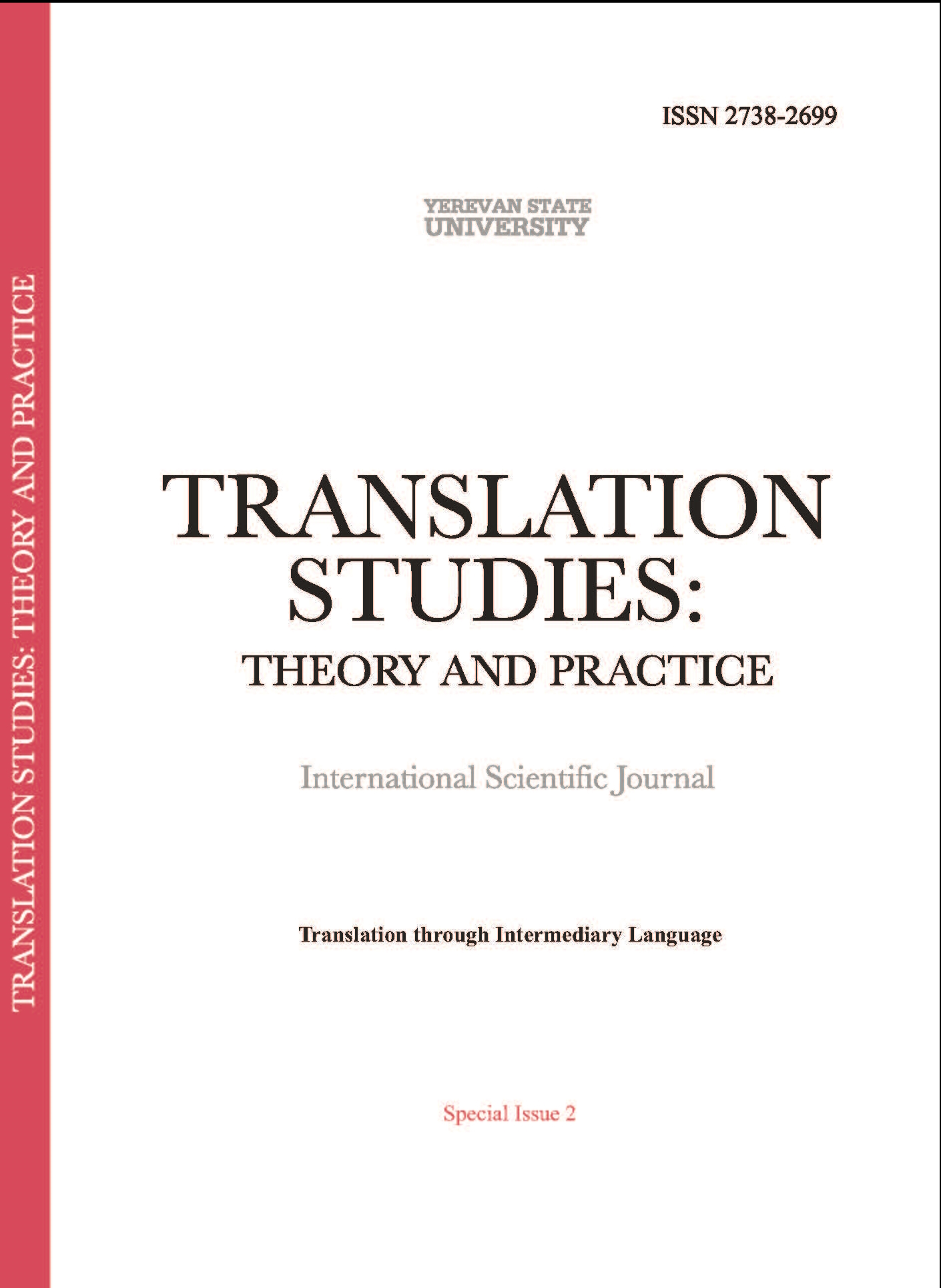Early Modern Indirections: An Open Door to Forms and Uses of Indirect Translation
DOI:
https://doi.org/10.46991/TSTP/2024.SI.2.009Keywords:
translation, history of ideas, history of religion, orientalismAbstract
The paper explores the role of different forms of translation in the historical movement of ideas. Its main object of study is Abraham Rogerius’ description of Hinduism, first published in Dutch in 1651 and soon translated into German and French. Both translations add material provided independently by the translator. The German version and its addenda left echoes in a German oriental novel that was, in its turn, translated. An abridgement of the French version became part of a survey of the world’s religions that was also translated in its turn and helped shape the Enlightenment. The main aim of my paper is to document the various modes of translation, adaptation and appropriation that enabled this dissemination.
References
Assis Rosa, Alexandra; Piȩta, Hanna, and Bueno Maia, Rita. (Eds.). 2017. “Theoretical, Methodological and Terminological Issues Regarding Indirect Translation. An Overview.” Special Issue of Translation Studies 10 (2): 113-132. Routledge.
Baldaeus, Philippus. 1672a. “Nauwkeurige en waarachtige ontdekking en wederlegginge van de afgoderye der Oost-Indische heydenen.” In Naauwkeurige beschryvinge van Malabar en Choromandel. Amsterdam: Johannes Janssonius & Johannes van Someren, 1-188.
Baldaeus, Philippus. 1672b. Wahrhaftige ausführliche Beschreibung der berühmten Ost-Indische Küsten Malabar und Coromandel. Amsterdam: Johannes Janssonius & Johannes van Someren.
Camps, Arnulf. 2000. Studies in Asian Mission History, 1956-1998. Leiden & Boston: Brill.
Cérémonies. 1723. Cérémonies et coutumes religieuses des peoples idolâtres […]. Tôme premier. Amsterdam: J.F. Bernard.
Emmer, Piet, and Gommans, Jos. 2012. Rijk aan de rand van de wereld. De geschiedenis van Nederland overzee 1600-1800. Amsterdam: Bert Bakker.
Huddleston, Lee. 1967. Origins of the American Indians, European Concepts, 1492-1729. Austin: University of Texas Press.
Kircher, Athanasius. 1667. China monumentis, quà sacris quà profanes,…illustrata… Amsterdam: Jacob Meurs.
Kort begrijp. 1651. Een kort begrijp der heydenen religie, op de kust Kormandel, door een haeres Bramenees, (Compagnijs-tolck sijnde) aen de heer gouverneur Arnoldus Heussen overghegheven, ende in onse spraecke overgeset, sijnde van woort to woort, als volght. Delft: Michiel Stael.
Lods, Armand. 1900. “Thomas La Grue 1620-1680.” Bulletin historique et littéraire (Société de l’histoire du protestantisme français) 49: 329-34.
Martin, Dieter, and Vorderstemann, Karin. 2013. (Eds.). Die europäische Banise. Rezeption und Übersetzung eines barocken Bestsellers. Berlin: W. De Gruyter.
Mendes Pinto, Fernão. 1652. De wonderlyke reizen van Fernando Mendez Pinto. Translated by J.H. Glazemaker. Amsterdam: Jan Hendriksz & Jan Rieuwertsz.
Menne, Ursula. 2013. “Constance récompensée. Die französische Bearbeitung der Asiatischen Banise (1771).” In Die europäische Banise. Rezeption und Übersetzung eines barocken Bestsellers, edited by Dieter Martin and Karin Vorderstemann. Berlin: W. De Gruyter, 453-80.
Naaukeurige. 1728. Naaukeurige beschryving der uitwendige godsdienst-plichten, kerk-zeden en gewoontes van alle volkeren der waereldt. Deel 3. Den Haag, Amsterdam & Rotterdam: Rutgert Alberts, Hermanus Uytwerf & Jan Beman.
Parker, Kenneth. 1999. (Ed.). Early Modern Tales of Orient. A Critical Anthology. London & New York: Routledge.
Piȩta, Hanna. 2017. “Theoretical, Methodological and Terminological Issues in Researching Indirect Translation: A Critical Annotated Bibliography.” Translation Studies 10: 198-206.
Downloads
Published
How to Cite
Issue
Section
License
Copyright (c) 2024 Theo Hermans

This work is licensed under a Creative Commons Attribution-NonCommercial 4.0 International License.










